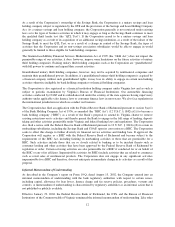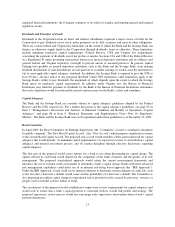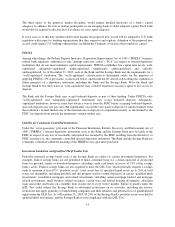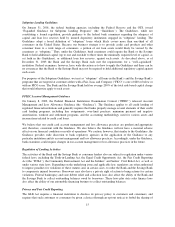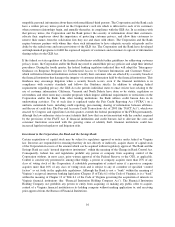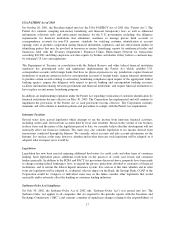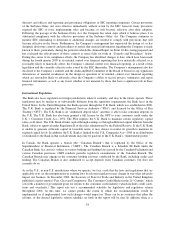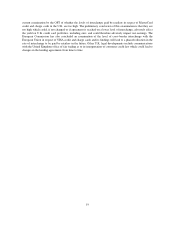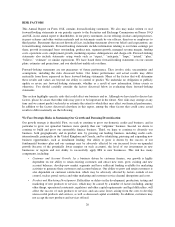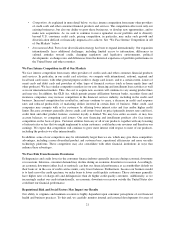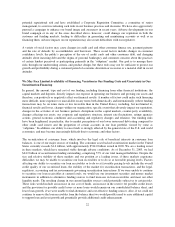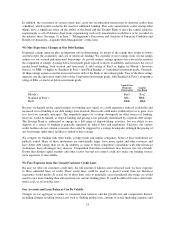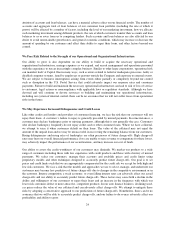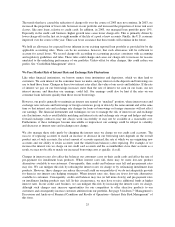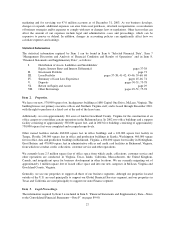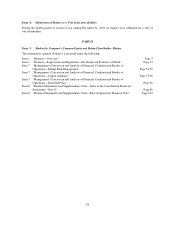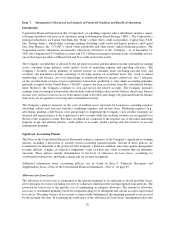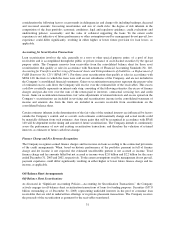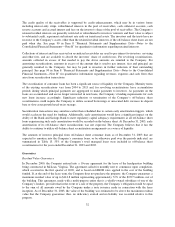Capital One 2003 Annual Report Download - page 40
Download and view the complete annual report
Please find page 40 of the 2003 Capital One annual report below. You can navigate through the pages in the report by either clicking on the pages listed below, or by using the keyword search tool below to find specific information within the annual report.potential reputational risk and have established a Corporate Reputation Committee, a committee of senior
management, to assist in evaluating such risks in our business practices and decisions. We have also aggressively
pursued a campaign to enhance our brand image and awareness in recent years. Adverse developments in our
brand campaign or in any of the areas described above, however, could damage our reputation in both the
customer and funding markets, leading to difficulties in generating and maintaining accounts as well as in
financing them. Adverse impacts on our reputation may also create difficulties with our regulators.
A variety of social factors may cause changes in credit card and other consumer finance use, payment patterns
and the rate of defaults by accountholders and borrowers. These social factors include changes in consumer
confidence levels, the public’s perception of the use of credit cards and other consumer debt, and changing
attitudes about incurring debt and the stigma of personal bankruptcy and consumer concerns about the practices
of certain lenders perceived as participating primarily in the “subprime” market. Our goal is to manage these
risks through our underwriting criteria and product design, but these tools may not be sufficient to protect our
growth and profitability during a sustained period of economic downturn or recession or a material shift in social
attitudes.
We May Face Limited Availability of Financing, Variation in Our Funding Costs and Uncertainty in Our
Securitization Financing
In general, the amount, type and cost of our funding, including financing from other financial institutions, the
capital markets and deposits, directly impacts our expense in operating our business and growing our assets and
therefore, can positively or negatively affect our financial results. A number of factors could make such financing
more difficult, more expensive or unavailable on any terms both domestically and internationally (where funding
transactions may be on terms more or less favorable than in the United States), including, but not limited to,
financial results and losses, changes within our organization, specific events that adversely impact our reputation,
changes in the activities of our business partners, disruptions in the capital markets, counter-party availability,
changes affecting our assets, our corporate and regulatory structure, interest rate fluctuations, ratings agencies
actions, general economic conditions and accounting and regulatory changes and relations. Our funding risks
have been heightened, in particular, due to market perceptions of our lower unsecured debt rating compared to
other credit card issuers and the proportion of certain accounts in our loan portfolio viewed by some as
“subprime.” In addition, our ability to raise funds is strongly affected by the general state of the U.S. and world
economies, and may become increasingly difficult due to economic and other factors.
The securitization of consumer loans, which involves the legal sale of beneficial interests in consumer loan
balances, is one of our major sources of funding. The consumer asset-backed securitization market in the United
States currently exceeds $1.4 trillion, with approximately $514.0 billion issued in 2003. We are a leading issuer
in these markets, which have remained stable through adverse conditions. As of December 31, 2003, we had
$44.2 billion of securitization funding outstanding, comprising 57% of our total managed liabilities. Despite the
size and relative stability of these markets and our position as a leading issuer, if these markets experience
difficulties we may be unable to securitize our loan receivables or to do so at favorable pricing levels. Factors
affecting our ability to securitize our loan receivables or to do so at favorable pricing levels include the overall
credit quality of our securitized loans, the stability of the market for securitization transactions, and the legal,
regulatory, accounting and tax environments governing securitization transactions. If we were unable to continue
to securitize our loan receivables at current levels, we would use our investment securities and money market
instruments in addition to alternative funding sources to fund increases in loan receivables and meet our other
liquidity needs. The resulting change in our current liquidity sources could potentially subject us to certain risks.
These risks would include an increase in our cost of funds, an increase in the reserve for possible credit losses
and the provision for possible credit losses as more loans would remain on our consolidated balance sheet, and
lower loan growth, if we were unable to find alternative and cost-effective funding sources. Also, if we could not
continue to remove the loan receivables from the balance sheet we would possibly need to raise additional capital
to support loan and asset growth and potentially provide additional credit enhancement.
22


